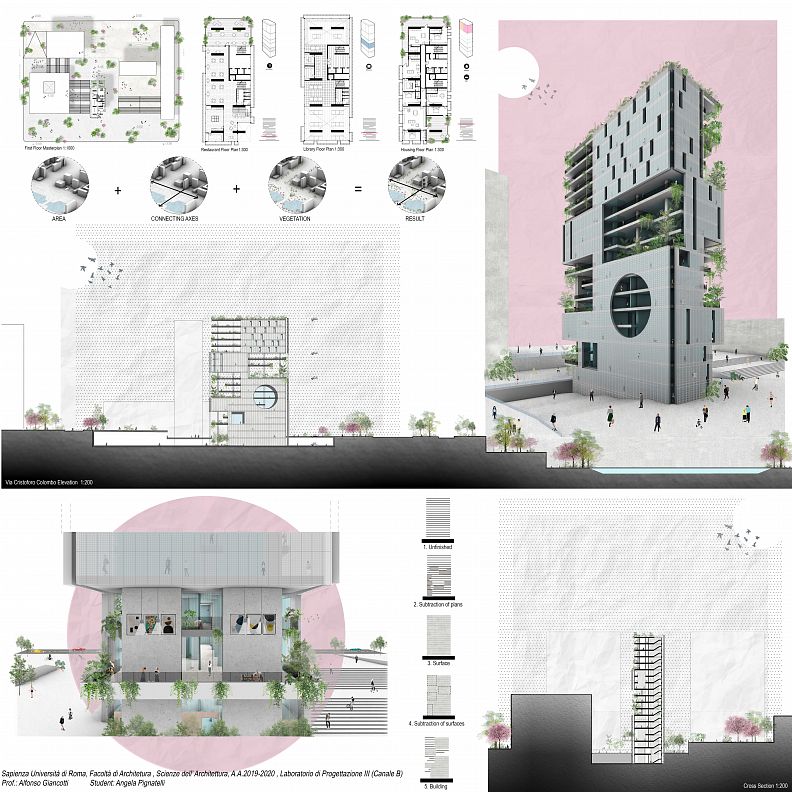Rewriting the unfinished - The case of the Finace Towers at Eur in Rome.

Project idea
The compositional theme of the project includes recovery of unfinished architecture in the EUR district of the city of Rome: that of the former complex Ministry of Finance in viale Europa. The body will qualify as the outcome of a reflection on ways in which it is possible to recover the unexpressed potential that architectures unfinished they carry in themselves to be passed by time of construction in a ruin without ever having been used, accepting incompleteness as an occasion of possible opening.
The project area includes five unfinished architectures, designed by Ligini in 1957, never completed. In particular, I deal with the design and transformation of tower one, which is into a state of total abandonment. These ruins are on the edge of society and have entered the daily landscape, but it is possible to give them a new life and a new story to tell about.
Project description
The project was born from a detailed analysis of the area and urban space. The main connection axes are identified in close contact to the building, namely America street and Cristoforo Colombo street, two high-flow roads. It can be deduced that the lot and in particular tower one is located in a strategic and central position in the Eur district, connected with good infrastructure such as metro B, Eur Fermi stop. Furthermore, tower one is located close to an area rich in vegetation. In front of this tower is the Eur’s lake, known for the promenade of Japan, because it is characterized by many Japanese cherry trees. Starting from these analyzes, the concept is developed. Given the central position of the tower, which almost divides the area into two parts, becoming almost a barrier, I wanted to solve the problem by doing excavation operations, so as to lighten the structure. The concept starts from the skeleton of the building, composed by eighteen floors, to which a first subtraction operation is performed. Later, a surface was added as an architectural envelope, from which parts were subtracted.
In this way, external spaces are identified which are common spaces of being. These spaces are meeting places, green terraces where the vegetation is thick, almost takes over the terraces.
The access to the building is both in the basement and on the ground floor of the building includes many public, semi-public and private fuctional areas such as a welcome area and a museum in the basement; a coffee shop and a bookshop on the ground floor, a restaurant on two levels, a library, coworking spaces and five floors of housing and then, there is a roof green terrace. All the floors of the building are characterized by full and empty spaces, but also by the distribution structure to allow better internal permeability.
Technical information
A double skin was added to the skeleton of the building to ensure that the unfinished could communicate with the surrounding context in a better way. This double skin is composed of vertical sheets of silk-screened glass which also act as sunscreens. Moreover, the subtraction of some parts of the coating surface highlighted the pre-existing unfinished structure.
The last step concerns the dematerialization of the four facades. since what interested me was to dematerialize the facades giving them personality and character. The perforation details are designed with a growing density and different shapes according to the function of the internal environments that illuminate. More than doing a new design, I wanted to highlight the unfinished building also through the choice of the external cladding, further confirming the idea that the unfinished should be considered an added value, because it can be subject to constant evolution.



















